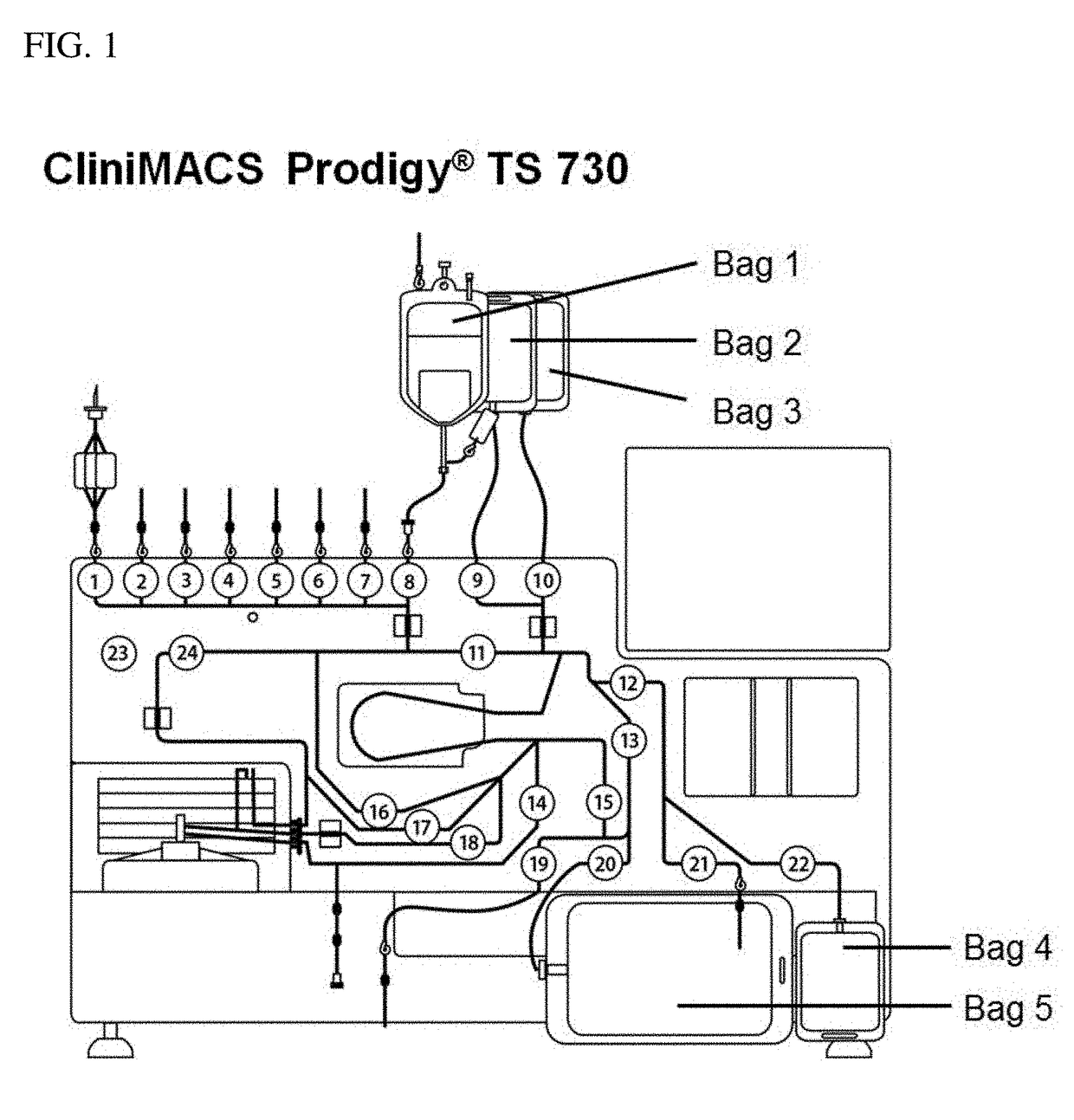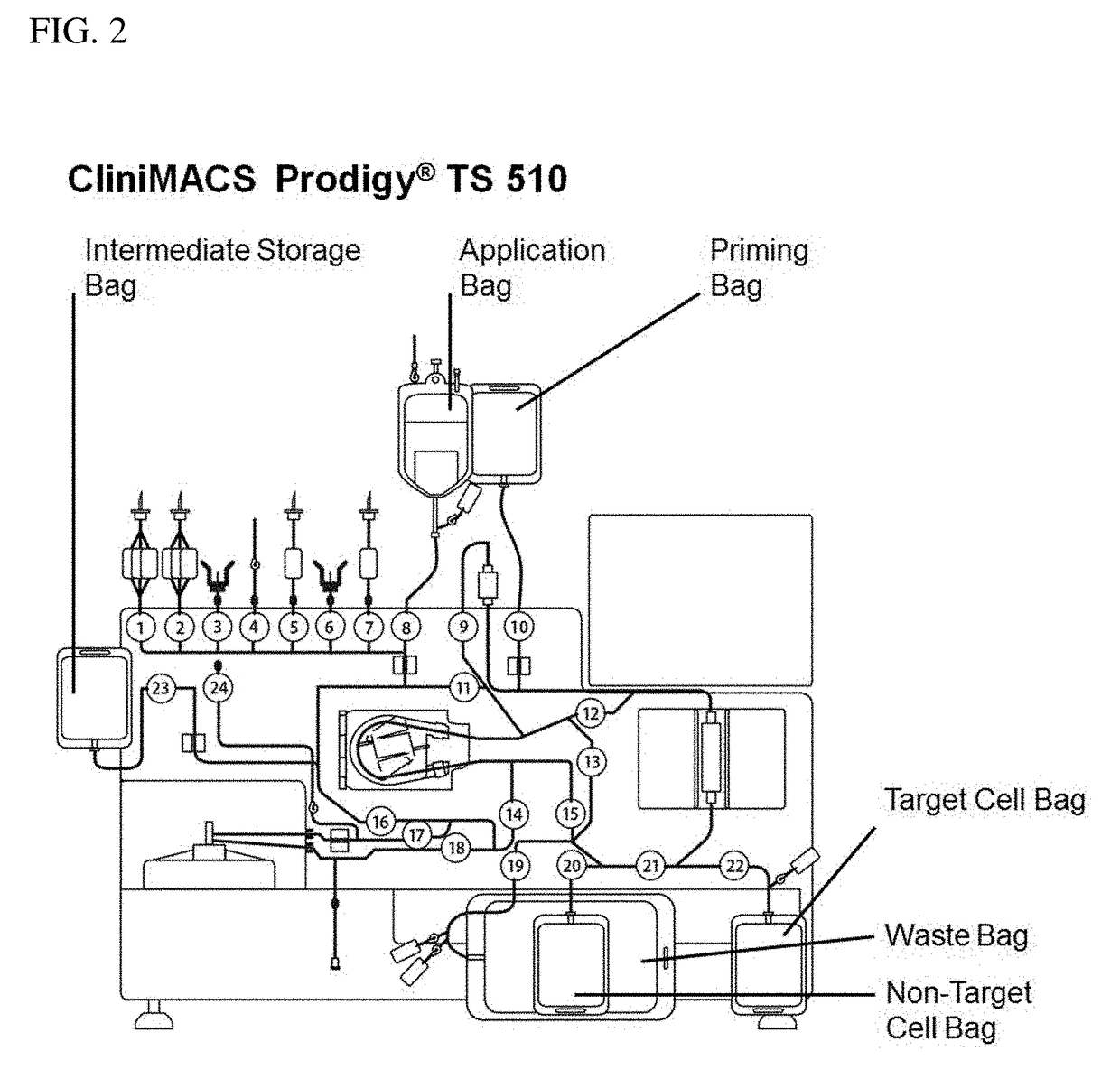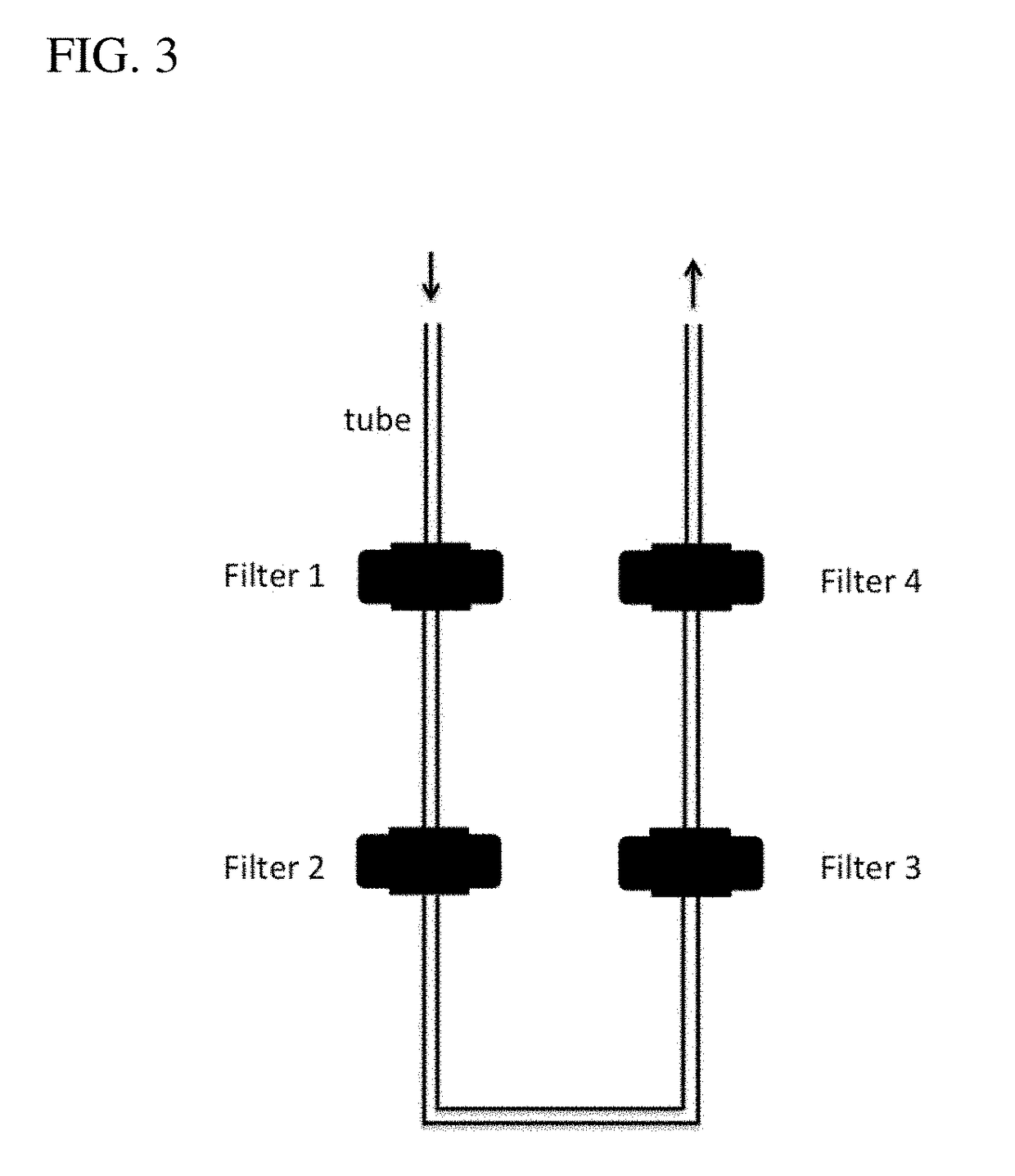Method for generation of a cell composition of mesencephalic dopaminergic progenitor cells
a technology of mesencephalic dopaminergic progenitor cells and cell compositions, applied in cell culture active agents, non-embryonic pluripotent stem cells, instruments, etc., can solve the problems of affecting the development of the subpopulation, and requiring extensive training of personnel, so as to improve the effect of symptoms or reverse symptoms
- Summary
- Abstract
- Description
- Claims
- Application Information
AI Technical Summary
Benefits of technology
Problems solved by technology
Method used
Image
Examples
embodiments
[0037]In a first embodiment of the present invention the method for generation of a cell population of mesencephalic dopaminergic progenitor cells from a starting cell composition, wherein said starting cell composition comprises pluripotent and / or multipotent stem cells, comprises the steps of:[0038]a) differentiating said pluripotent and / or multipotent stem cells into mesencephalic dopaminergic progenitor cells, thereby generating a cell population comprising mesencephalic dopaminergic progenitor cells and other cells[0039]b) dissociating the differentiated cells of step a) into a single cell suspension[0040]c) contacting said single cell suspension with an antigen-binding molecule specific for the CD47 antigen, wherein said antigen binding molecule is coupled to a tag, thereby labeling the CD47 positive cells,d) isolating the labeled CD47 positive cells, i.e. the mesencephalic dopaminergic progenitor cells.
[0041]In one embodiment of present invention said method comprises a proli...
example 1
Identification of CD47 on Mesencephalic Dopaminergic Progenitor Cells
[0184]Human iPS cells were differentiated towards dopaminergic progenitors cells. The protocol was adapted from Kirkeby et al. 2012. For differentiation the iPS cells were harvested with TrypLE (Life Technologies, 12563-029). The cells from feeder co-cultivation underwent a feeder removal step (Miltenyi Biotec 130-095-531). Single cells were seeded in low attachment plates (2×106 / 2 ml / 6 well) to form EBs in DMEM-F12:MACS Neuro (1:1), N2 supplement (1:100; Gibco 17502-48), NeuroBrew-21 w / o vitamin A (1:50; Miltenyi Biotec 130-097-263), ROCK-Inhibitor (Thiazovivin 2 μM, Miltenyi Biotec 130-104-461 or Stemgent 04-0017) was added for the first two days. On d4, the cells were plated on polyornithine (PO: 15 μg / ml; Sigma P3655), fibronectin (FN: 5 μg / ml; BIOPUR AG 11-50-1104) and laminin (LN: 5 μμg / ml; Sigma L20-20) coated plastic ware. From d0 to d9 the following neuralization and patterning factors were present SB43154...
example 2
Verification of CD47 as a Marker for Mesencephalic Dopaminergic Progenitor Cells Derived from Different Pluripotent Stem Cell Sources
[0186]To verify that CD47 is a marker for mesencephalic dopaminergic progenitor cells independent from the sources of PSCs used, we analysed the correlation of CD47 and FOXA2. We could show this correlation for the ES line (SA001) and two iPS lines (K10, viPS).
[0187]To further test the robustness of the marker, PSCs were cultivated either in feeder co-cultivation or feeder free (MG, VTN) cultivation systems prior to the differentiation.
[0188]The differentiation was started in low attachment plates or bacterial dishes (6 well, 12 well, 24 well, 6 cm dishes). As differentiation medium either MACS Neuro or Neurobasal has been used.
PUM
 Login to View More
Login to View More Abstract
Description
Claims
Application Information
 Login to View More
Login to View More - R&D
- Intellectual Property
- Life Sciences
- Materials
- Tech Scout
- Unparalleled Data Quality
- Higher Quality Content
- 60% Fewer Hallucinations
Browse by: Latest US Patents, China's latest patents, Technical Efficacy Thesaurus, Application Domain, Technology Topic, Popular Technical Reports.
© 2025 PatSnap. All rights reserved.Legal|Privacy policy|Modern Slavery Act Transparency Statement|Sitemap|About US| Contact US: help@patsnap.com



